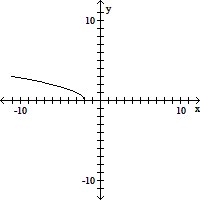Solve the system using determinants.2x + y +  z = 13
z = 13 x + 2z = -8x -2y = -4
x + 2z = -8x -2y = -4
A. (8, 7, -9)
B. (8, 6, -6)
C. (6, 5, -6)
D. (12, 6, -4)
Answer: C
You might also like to view...
Solve the equation (x in radians and ? in degrees) for all exact solutions where appropriate. Round approximate answers in radians to four decimal places and approximate answers in degrees to the nearest tenth.3 cos2? + 2 cos ? = 1
A. {51.8° + 360°n, 128.2° + 360°n} B. {70.5° + 360°n, 180° + 360°n, 289.5° + 360°n} C. {49.8° + 360°n, 130.2° + 360°n, 229.8° + 360°n, 310.2° + 360°n} D. {103.2° + 360°n, 145.2° + 360°n, 283.2° + 360°n, 325.2° + 360°n}
Express the given logarithm as a sum and/or difference of logarithms. Simplify, if possible. Assume that all variables represent positive real numbers.log5
A.  log5r +
log5r +  log5s -
log5s -  log59
log59
B.  log5rs -
log5rs -  log59
log59
C.  log5r ?
log5r ?  log5s ÷
log5s ÷  log59
log59
D.  log5r +
log5r +  log5s - log59
log5s - log59
Determine the intervals of the domain over which the function is continuous.
A. (-?, ?) B. (-?, -2] C. (-2, ?) D. (-?, -2); (-2, ?)
Answer the question or provide an explanation.True or false? Any polynomial function of odd degree is a one-to-one function.
A. True B. False